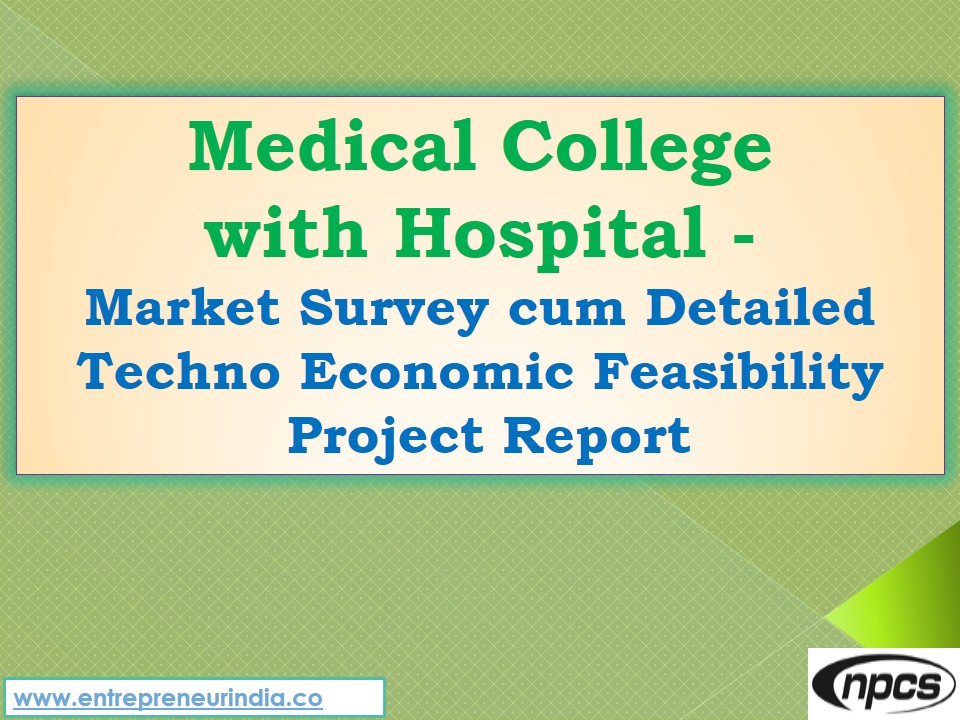
A medical college with an attached hospital plays a vital role in strengthening a nation’s healthcare infrastructure. While a standalone hospital provides medical care, a medical college also ensures the continuous supply of trained doctors. Moreover, when both are integrated, a synergistic ecosystem is created for practical learning, research, and quality treatment. Therefore, the demand for such integrated institutions has significantly increased in recent years. Due to rising population and healthcare awareness, this model is being widely promoted by both government and private sectors.
Why Establish a Medical College with Hospital?
In developing and densely populated countries, medical colleges and hospitals are needed not only to serve patients but also to bridge the doctor-patient ratio. By 2030, a massive shortfall in medical professionals has been projected in India and other growing economies. Consequently, the establishment of new medical colleges is being encouraged through various incentives and schemes. Furthermore, medical colleges with hospitals ensure better hands-on training for students while improving healthcare accessibility for local populations.
See Also : Waste Paper Recycling Plant
Project Setup and Infrastructure Requirements
For any entrepreneur or educational group, setting up a medical college with a hospital involves several structured phases. Initially, comprehensive planning is essential. Besides land, building infrastructure and regulatory approvals, strategic planning for teaching faculty, hospital staff, and student intake must be done.
Location and Land Requirements
Firstly, a large area of land is required—typically around 20 to 25 acres. This land should be in a pollution-free zone, preferably close to urban and semi-urban centers. Accessibility by road and proximity to emergency services are also mandatory. Furthermore, additional space should be allocated for future expansions, like nursing colleges, research labs, or super-specialty wings.
Building and Campus Facilities
Subsequently, the construction of hospital blocks, college buildings, lecture halls, hostels, libraries, and laboratories must be carried out. As per the guidelines of the National Medical Commission (NMC), specific spatial standards must be adhered to. For example, a 300 to 500-bed hospital is required for a college with 100 to 150 MBBS students annually. In addition, residential quarters for doctors and staff, common rooms, sports grounds, and auditoriums are needed.
Academic and Clinical Staffing
To run a medical college with a hospital, qualified teaching staff, specialists, surgeons, and nursing personnel must be recruited. Moreover, minimum faculty-to-student ratios are defined by the NMC. Therefore, the hiring process must be aligned with statutory norms. Also, experienced hospital administrators and support staff should be appointed for hospital operations.
Equipment and Technology
Modern healthcare facilities require advanced diagnostic tools, surgical equipment, and lab technology. For this reason, investment in MRI, CT scan, ventilators, operation theatres, and digital learning resources must be planned. Additionally, the IT infrastructure should be robust to support electronic health records (EHR), telemedicine, and hospital management software systems.
Regulatory Approvals and Accreditation
One of the most critical aspects is obtaining regulatory approvals. Before admissions can be initiated, recognition must be secured from the National Medical Commission (NMC). Furthermore, state government clearances and affiliation with a recognized university are mandatory.
Approval Process
Initially, a Letter of Intent (LOI) must be obtained by submitting the project report, land documents, and proof of financial capability. After infrastructure development, an inspection is conducted by NMC-appointed assessors. Only after successful inspection and compliance can approval for student intake be granted. Also, periodic inspections are conducted even after establishment to ensure consistent standards.
Compliance with NABH and NAAC
For quality assurance, hospitals are often accredited with NABH (National Accreditation Board for Hospitals) while medical colleges opt for NAAC (National Assessment and Accreditation Council) ratings. These accreditations are important not just for credibility but also for securing government funding and student preference.
Capital Investment and Cost Estimates
Establishing a medical college with a hospital requires substantial investment. However, the capital investment varies depending on location, scale, and infrastructure choices.
Land and Construction Costs
Usually, land acquisition can cost between ?10 crore to ?30 crore depending on the city or state. Construction of buildings, hospital wards, operation theatres, and lecture halls adds another ?100 to ?150 crore. Additionally, equipment procurement may cost ?50 crore or more, depending on the type of machinery and facilities chosen.
Salaries and Operational Costs
Staff salaries, electricity, water supply, biomedical waste disposal, and consumables form a major part of recurring expenses. For a hospital with 300 beds, operating costs of ?3 crore to ?6 crore per month can be expected. Transitioning to self-sustainability through medical services billing, insurance reimbursements, and tuition fees may take 2 to 5 years.
Revenue Generation Model
Although capital-heavy, revenue is generated through multiple streams. Primarily, tuition fees from MBBS students constitute a stable income. Moreover, OPD and IPD services, diagnostics, pharmacy, and minor surgeries bring in regular cash flows. With good management and patient footfall, profitability can be achieved in 6 to 8 years.
Academic Planning and Curriculum
Academic excellence is the backbone of any medical institution. Consequently, designing a structured curriculum aligned with the Medical Council of India (MCI) or NMC syllabus is necessary. Also, the use of simulation labs, digital classrooms, and online learning platforms is being widely adopted. For long-term success, investments in faculty development, research activities, and CME (Continuing Medical Education) programs are highly recommended.
MBBS Program and Student Intake
Generally, approval is sought for 100 or 150 seats initially. The MBBS program includes basic sciences in the first year followed by clinical postings in subsequent years. Attendance, practicals, internal assessments, and internships are governed by strict academic protocols. Moreover, students must undergo a 12-month rotating internship at the associated hospital for successful graduation.
Expansion into PG and Nursing Programs
After five years of undergraduate program success, institutions may apply for postgraduate seats (MD/MS) and super-specialty programs. In parallel, allied courses like B.Sc. Nursing, paramedical training, or dental sciences can be added to diversify academic offerings and revenue streams.
Benefits to the Local Community
The establishment of a medical college with hospital directly impacts the region’s socio-economic development. Not only are employment opportunities created, but healthcare access is also vastly improved. Additionally, rural health missions and outreach programs can be efficiently managed through the medical team. Often, these institutions also attract ancillary industries like medical supply chains, housing, and retail.
Employment Generation
From construction workers to medical staff, lab technicians, and administrative roles—hundreds of jobs are created during setup and after commencement. Furthermore, the presence of such institutions elevates the educational standards of the area and leads to urban development.
Rural Healthcare Impact
The hospital acts as a referral center for nearby Primary Health Centers (PHCs) and Community Health Centers (CHCs). Consequently, critical care and emergency services become accessible to low-income and rural populations. Moreover, awareness programs for diseases like diabetes, hypertension, tuberculosis, and maternal care can be carried out effectively.
Challenges and Risk Management
Despite its benefits, multiple challenges are faced during the establishment and operation phases. These must be anticipated and mitigated through robust planning.
Regulatory Hurdles
Approval delays, changing compliance requirements, and frequent inspections can delay operations. Therefore, legal experts and compliance officers must be engaged from the initial phase.
Faculty Retention and Quality
Retaining senior faculty in remote locations is often a problem. Hence, competitive salary packages, research grants, and housing incentives should be provided. Otherwise, non-compliance in faculty requirements can lead to withdrawal of recognition.
Operational Sustainability
Initially, operational losses are common due to high capital and recurring costs. However, financial prudence, phased expansion, and public-private partnerships (PPPs) can be used to manage sustainability.
See Also : Wall Putty Manufacturing
Conclusion
A medical college with a hospital is considered one of the most impactful long-term investments in the healthcare and education sector. While the initial costs are high, the societal returns in terms of health improvement, employment, and education are immense. Moreover, such projects align with national goals like “Health for All” and “Skill India.” With the right planning, regulatory compliance, and execution, a medical college and hospital project can serve as a profitable and socially responsible venture for any entrepreneur or educational trust.





